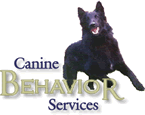Your Weekly Training Tip
Feb 28, 2010
|
Dogs are such amazing learners, that sometimes we forget that for them, learning to respond to our cues and commands is similar to us learning a foreign language - just a little harder! Dogs don't have translators, or canine-human dictionaries, or nifty language software to help them along. Frequently, when our dogs are having trouble becoming reliable with a command, it's us that have muddied the waters for them. Suppose you say "come" or "come on" to your dog. Is your dog sure to understand what you mean? Do you want your dog to run from where he is, straight to you? Or, do you just want him to walk along with you? Maybe you're simply trying to hurry him up ("come on, Ginger, get in the car!"), or cheer him on ("sit, sit -- come on, Baby, sit!"). Similarly, maybe you've asked your dog to "down". Do you want him to lie down? Sit down? Get down? Or maybe put it down? What's a dog to think?! Put yourself in your dog's position - having one word mean more than one thing can get mighty confusing! Lie down: down, drop, lay, platz (German word for down, used by many protection trainers) Frankly, you can choose any word you like for any command. You could teach that "grape" means lie down, "cherry" means keep off, and "apple" means drop your toy! It makes no difference to your dog. I would only suggest that you use words that make sense to you, since in order to use them in teaching and guiding your dog - you will need to keep them straight! Until next week, enjoy your dogs, and Happy Training! Julie Cantrell BSc, CPDT-KA, CDBC |
Free Dog Training & Behavior Tips If you enjoy our training tips, sign up here to get them in your inbox! With each issue, you'll understand your dog better, and enjoy training more! |
www.k9behaviorservices.com

